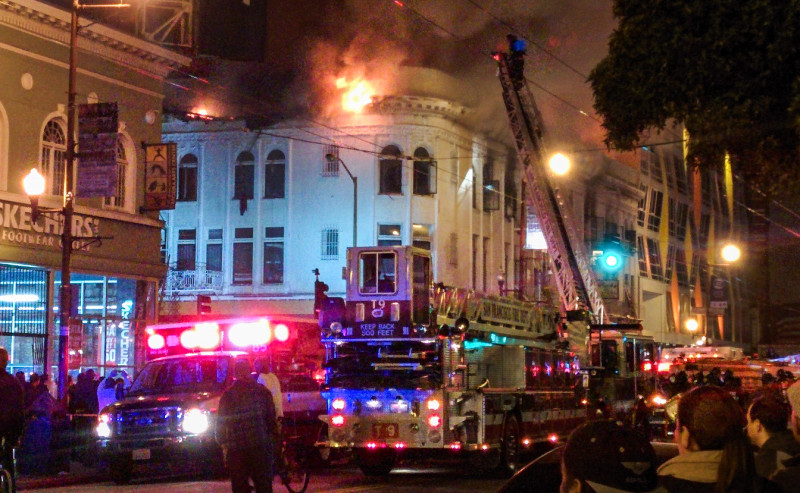"The data shows that sprinklers absolutely save lives," Kim says.
She adds she's been talking with building owners about ways to require some older apartments to have sprinklers in their common areas.
"What's been tough is that it is a political issue," Kim says. "It's not cheap. This is a requirement and mandate that we would be putting on property owners on top of many mandates the city has already put in place."
Janan New, executive director of the San Francisco Apartment Association, says requiring installation of sprinklers would worsen the city's already difficult housing situation.
"A fire sprinkler system is going to displace tenants out of their units," New says. "I don't know that's something that we want to do as a city during this housing shortage."
And she says there are other problems.
Installing sprinklers requires owners to put in a pump at the curb in front of their buildings, bring in water pipes and break walls in old structures, leading to risk of lead and asbestos exposure, New says.
The installation would include "the ripping up of the street, ripping up of the sidewalk, ripping up of the ground floor, ripping up of the wall and then going into the ceilings and displacing people in the building while that construction work is going on," New says.
"Of course you can't question life safety, but we believe that there's a better way to go about this," New says.
She said the fires have prompted the association to educate residential managers and tenants on how to operate a fire escape and where buildings' fire extinguishers are.
Tenant advocates don't buy the association's argument.
"We know sprinklers work," says Tommi Avicolli Mecca, counseling director for the Housing Rights Committee of San Francisco. "We know they help save lives when there's fires. I think it's a no-brainer."
Mecca emphasizes that many of the people living in San Francisco's older apartment buildings are low income.
"These older buildings that are seeing these fires are rent controlled," Mecca says. "The reality is there are a lot of people living in these apartments who could not afford to live in the city otherwise, who could not afford the market rents."
A building owner in San Francisco who wants to equip a structure with a sprinkler system must pay for the installation, then work with the city to connect the system with its water mains. Utility workers conduct a hydraulic analysis to make sure any new sprinklers have enough water pressure.
The hearing marks the second examination of fire safety at City Hall in recent months. The supervisors' Public Safety and Neighborhood Services Committee held a hearing in March to focus on how fire and building inspectors enforce the city's fire code.








